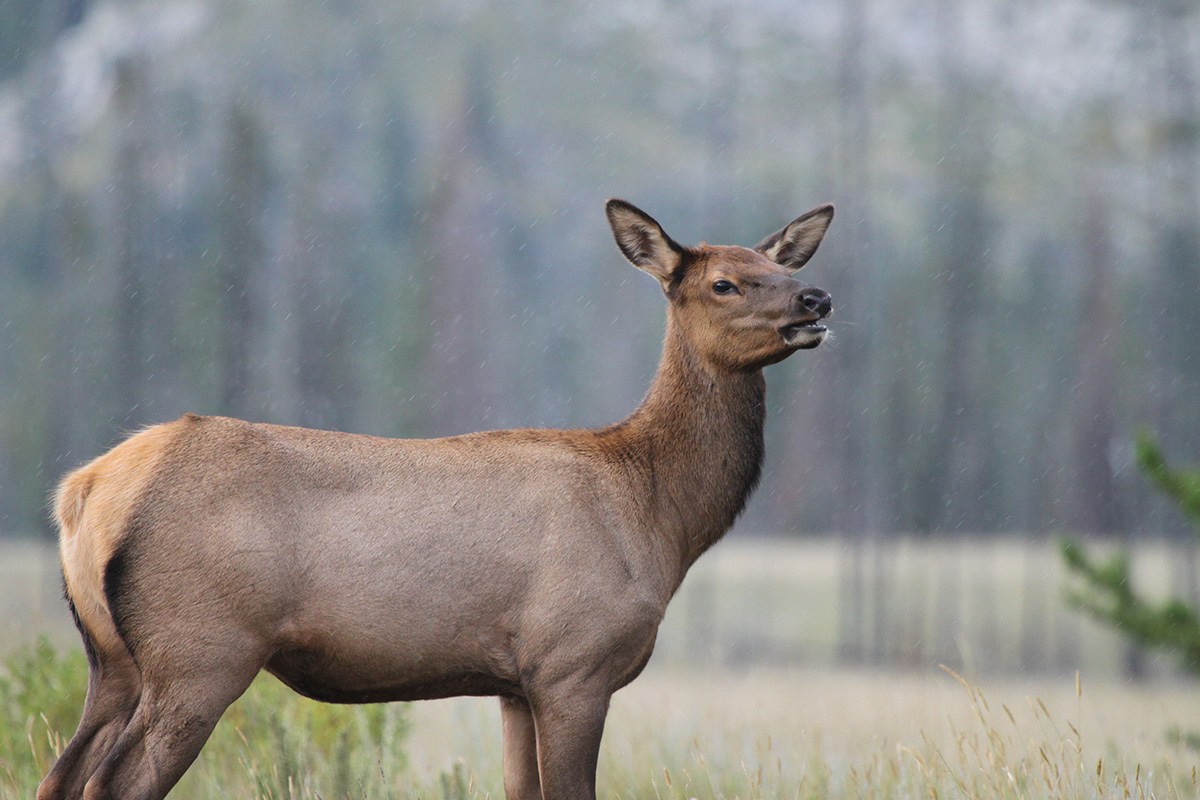
New University of Alberta research shows that female elk learn to avoid hunters as they age. Photo credit: Mark Boyce
Female elk adapt their behaviour to avoid hunters as they get older, new UAlberta research reveals.
"Elk learn to become shy as they get older," said UAlberta conservation biologist Mark Boyce. "The magic number is 10. After this age threshold, female elk become almost bulletproof, virtually invulnerable to hunting.
The study, conducted by Boyce and two former postdoctoral fellows, Henrik Thurfjell and Simone Ciuti, examined elk in an area of 46,000 km2 in Southwestern Alberta and Southeastern British Columbia from 2007 to 2012. Using radio collars, the team studied the movements and behaviour of elk across seven hunting seasons.
Results show that female elk adjust their behaviour as they age, showing that social learning, not just natural selection or selection by hunting, plays a large part in how older female elk avoid hunters.
As each season passes, elk that survive hunting seasons get even better at avoiding hunters in subsequent seasons. This includes moving less overall, covering less ground, and staying in safer areas such as dense forests and steep, rocky terrain where hunters are unlikely to be.
These findings also have implications for wildlife management and conservation strategies.
"Learning plays a large part in the adaptation of elk to hunting, and those elk that survive hunting seasons get even better at avoiding hunters in subsequent seasons," explained Boyce.
The response is not genetic, so even though hunters are altering the age and sex composition of the population, it is unlikely that hunting is having substantial long-term consequences on these elk.
"This means that our wildlife management and conservation strategies are working," said Boyce.
Following their post-doctoral fellowships at the University of Alberta, Henrik Thurfjell now works at the Swedish University of Agricultural Science (SLU Uppsala) and Simone Ciuti is now a lecturer at the University of Freiburg.
The paper, "Learning from the mistakes of others: How female elk adjust behaviour with age to avoid hunters," is published in PLOS One.